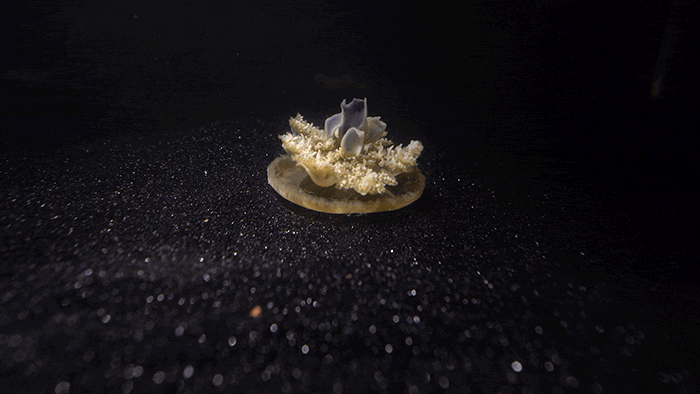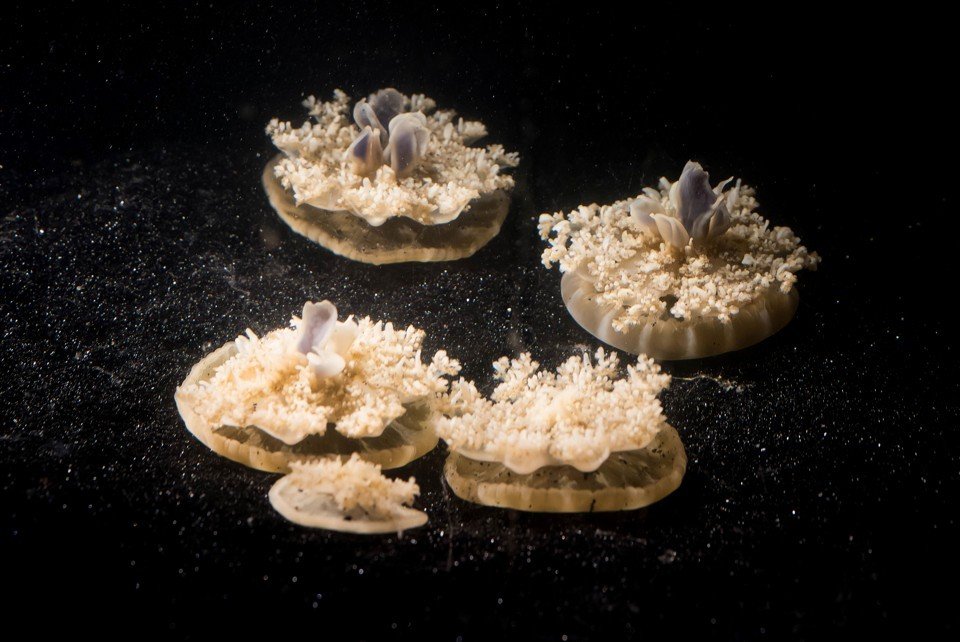This Brain-Less Creature Loves Sleep Too! – Study
It’s a no-brainer.
We all love sleep but nobody gets enough of it. It is a biological process not only close to our hearts but also equally deep rooted in the animal kingdom, and now jellyfishes have surprised the scientists with their ability to snooze proving a brain isn’t necessary for sleep (not really shocking to me given some of my friends sleep soundly as well).
Some believe that only mammals and birds could be said to truly sleep. Other people think that even plants have something akin to sleep. But now scientists at the California Institute of Technology, through a gauntlet of clever experiments, have proven that jellyfishes also enter a a sleeplike state. Every night, they become less active and less responsive. They can be easily roused from this state, but if they’re deprived of their slow periods for too long, they become even more inactive and unresponsive the next day—as if they were reeling from an all-nighter. And if the trio are right, their discovery has big implications for understanding both how sleep evolved—and why.

The subject of the study- a primitive, upside-down jellyfish genus known as Cassiopea– was found to exhibit sleep-like behaviours similar to humans at night, suggesting that sleep is both very old and, surprisingly, doesn’t require a brain.
“It may not seem surprising that jellyfish sleep — after all, mammals sleep, and other invertebrates such as worms and fruit flies sleep,” co-author Ravi Nath, a graduate student in Caltech’s Sternberg laboratory, said in a statement. “But jellyfish are the most evolutionarily ancient animals known to sleep. This finding opens up many more questions: Is sleep the property of neurons? And perhaps a more far-fetched question: Do plants sleep?”
These brainless, spineless bottom-dwellers are native to mudflats, mangrove swamps, and other warm, shallow waters. Cassiopea do not look like typical jellyfish – they are silver dollar-sized, splotched with black pigment, and rest upside-down on the sea floor, researchers said. With tentacles curled above bell-shaped bodies, the jellies resemble miniature heads of cauliflower. Cassiopea spends the vast majority of its time sitting upside down on the ocean or tank floor, pulsing its bell about once a second. This sedentary behavior makes the upside-down jellyfish an easy animal to track behaviorally.
To measure activity, the researchers counted the rate of the bell’s pulsation in 23 jellyfish for six straight days and nights. They found that the rate dropped by 32 percent at night, going from about 1,155 pulses per 20 minutes during the day to 781 pulses per 20 minutes at night.
When the researchers put a little midnight snack in the water column, the jellies perked up and started pulsing at daytime rates, indicating that this quiescent period was easily reversible.
Cassiopea jellies prefer sitting to swimming, so the suspended jellies pulsed their way down to the tank floor. But they did so much faster during the day, starting to pulse by 2 seconds after losing their resting surface, than they did at night, when it took them about 6 seconds to start pulsing — almost as if they were groggily shaking off sleep before they could react.
Further, to test whether these jellyfishes got tired tired the next day if they were deprived of their quiescence at night, the team blew gentle pulses of water at the jellies for 10 seconds every 20 minutes. They found that when they disturbed the jellyfish this way during the last 6 hours of the night, the jellyfish showed a 12 percent decline in pulsing in the first 4 hours of the next day, as if they were having trouble waking up. When the researchers continued the disturbances all night, the jellyfish were 17 percent less active over the entire next day. After a full night without any disturbances, the jellyfish returned to normal activity levels the following day.
Clearly, much more research needs to be conducted to see whether or not these animals were truly asleep. Since this was all conducted in a lab, it’s unclear how Cassiopea or other jellies would behave in the wild.
The team’s next move is to look at the jellyfish’s genes. The genes that influence sleep in flies and worms are the same as those that affect the slumbers of mice and humans—and based on a preliminary glance at Cassiopea’s genome, they seem to exist there too.






















